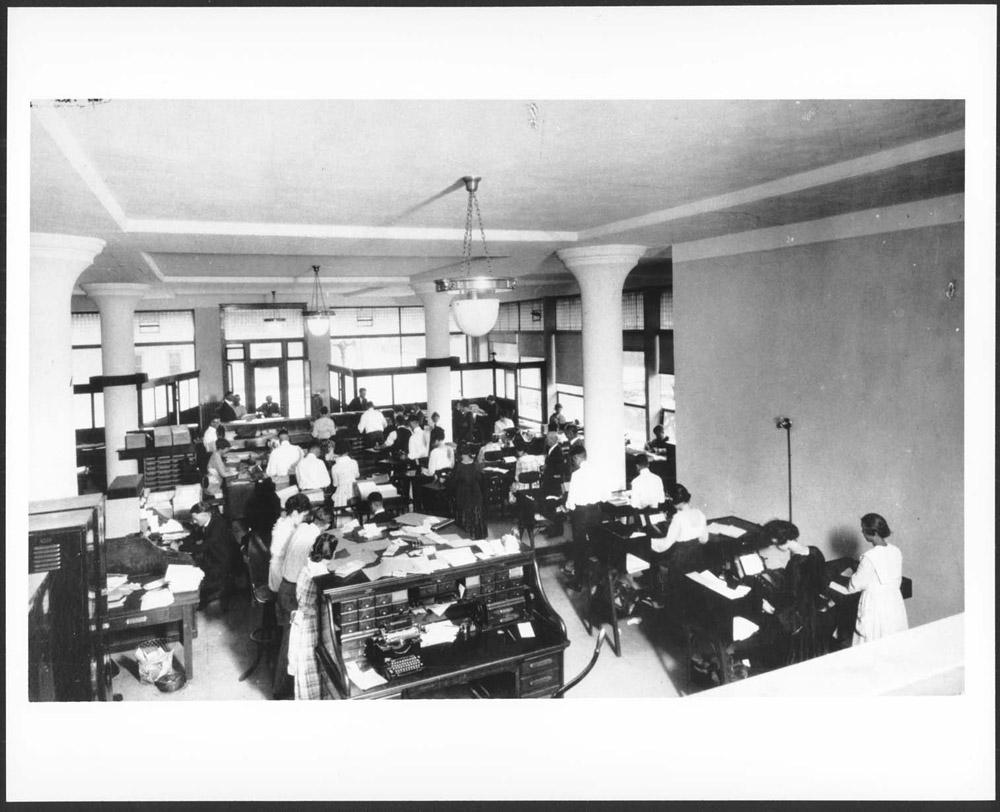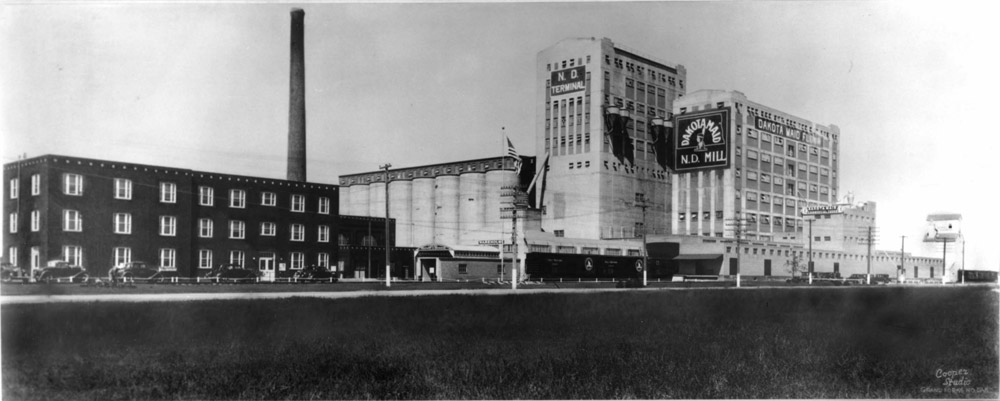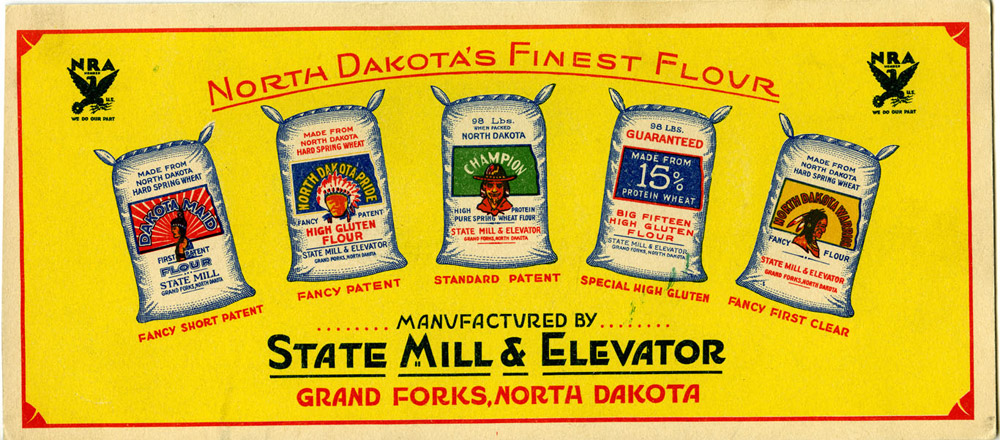The Bank of North Dakota was established by law in 1919 when the Nonpartisan League (NPL) controlled the North Dakota legislature and governorship. Though Nonpartisan League (NPL) leaders were recalled in 1921, the new governor, Ragnvald A. Nestos, wanted to give the NPL institutions a good chance to succeed. The Bank of North Dakota and the State Mill and Elevator were new ideas in government. Nestos hoped that these two institutions might help to alleviate the agricultural depression of the 1920s.

The Bank of North Dakota was not an ordinary bank. The average citizen could not walk in and open a checking account. The Bank was meant to support agriculture and business. (See Image 5.) Through its rural credit program, the Bank made loans (mortgages) on farm land, mostly in the western part of the state where farmers were suffering from crop losses and low prices. The interest rates were reasonable (7.3 per cent) and became lower during the 1920s (6 per cent). However, the Bank of North Dakota could not collect on many of the loans to farmers. By 1936, the Bank of North Dakota had lost $8.8 million on the rural credit program. Funds had to be transferred from other state funds to keep the Bank of North Dakota from failing. The Bank of North Dakota did not close, but it had to find a way to sell the land it had acquired from foreclosures and make new loan policies.

The North Dakota Mill and Elevator was under construction when the Nonpartisan League officials were removed from office in 1921. Governor Nestos found funding to finish construction. Shortly before the election of 1922, Governor Nestos announced that the mill was finished. Actually, it was not finished until February 1923. (See Image 6.)

Governor Nestos planned to have the State Mill and Elevator play an important part in raising the price of wheat. The Elevator paid the highest possible price for wheat and the mill sold flour for a price lower than that of privately-owned mills. It had the capacity to store nearly 2 million bushels of wheat and to manufacture 3,750 barrels of flour every day. (See Image 7.)
The Mill and Elevator, however, did not fare well in the 1920s. The location of the Mill and Elevator in Grand Forks was too distant for many farmers to who could not afford the cost of shipping grain to Grand Forks. The Mill and Elevator had to pay the same high freight rates to the railroads, so its costs were high. In addition, there was a lot of political interference in the operations of the Mill and Elevator. The biggest problem, however, was that the Mill and Elevator did not operate at full capacity. The Mill and Elevator continued to lose money throughout the 1920s and 1930s.
Governor Nestos hoped that the purchase of grain by the Mill and Elevator would bring about a higher market price for wheat, but that did not happen. The price of wheat was based on many factors. World market prices and demand for wheat throughout the nation and the world had a larger influence on wheat prices than any action taken in one state. However, like the Bank of North Dakota, the Mill and Elevator continued in operation throughout the tough years of the Great Depression. The managers of both institutions learned new lessons and found new ways to make the institutions work for the people of North Dakota.
Why is this important? North Dakota’s Nonpartisan League institutions were created on socialist principles. No other state owns a bank or a grain elevator or mill. Though these institutions had a lot of problems to solve in the beginning, they eventually became an important part of the state’s economy. Today, other states are considering opening a state-owned bank because the bank has helped to stabilize North Dakota’s economy.


